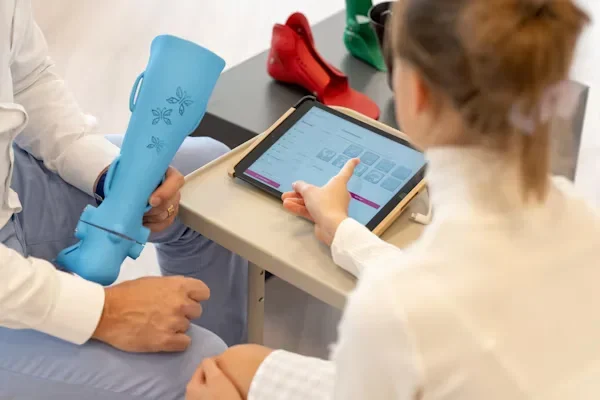Disclaimer: This content is for informational purposes only and is not medical advice. Please consult a healthcare professional for personalized care and treatment.
Let’s be real, no one wants to feel like just another name on a chart. Long waits, short visits, and rushed conversations are still too familiar, frustrating people. Today’s healthcare system is trying to move away from that. The goal? Focus on the person, not just the problem.
As expectations change and technology evolves, there’s a big push to improve things. That means listening more, improving experiences, and assuring everyone gets what they need. This guide is a great starting point if you’re passionate about healthcare or want to be part of the change.
Understanding the Core of Patient-Centered Care

This approach isn’t about fancy tools or complicated systems; it’s about putting people first. That means paying close attention to what matters most to each individual. Their goals, preferences, and values should be part of every decision. Instead of telling someone what to do, it’s about working with them to determine what works best.
Respecting cultural backgrounds, personal beliefs, and lifestyle choices is also essential. Building genuine connections leads to improved communication and increased trust. It’s not just about treating an illness; it’s about caring for the whole person.
Advancing Care Through Clinical Leadership

Healthcare requires more than good intentions; it requires strong leadership. As things become more complex, we need professionals who understand patient needs and system-level changes. Leaders can help design more effective systems, enhance team coordination, and guide long-term improvements. For nurses seeking to lead in the ever-changing healthcare landscape, an online DNP degree program is a valuable option. This program builds advanced skills in health policy, clinical practice, and evidence-based care. It’s a flexible, accredited path for those ready to lead positive change.
Leveraging Technology to Improve the Patient Experience

Technology isn’t just changing how we deliver services and how people feel about getting help. Features like telehealth, mobile apps, and online portals enable patients to stay more involved and informed. These tools give people quicker access to results, easier appointment booking, and more ways to ask questions. When used effectively, technology also streamlines processes behind the scenes. It can help teams share information better and reduce delays. The key is using these tools to support real human connection—not replace it.
Addressing Social Determinants of Health

Health doesn’t happen in a vacuum. A person’s environment, income, education, and housing all influence their well-being. If someone doesn’t have access to healthy food, stable shelter, or transportation, even the best medical plan might not be enough. Recognizing these factors helps create more effective and realistic solutions. Providers who understand the whole picture are better equipped to make a lasting difference in someone’s life.
Building Trust Through Empathetic Communication
Trust takes time, and it starts with how we talk to people. Being clear, calm, and kind matters more than we sometimes realize. When someone feels heard, they’re more likely to share details, ask questions, and follow up. Empathy isn’t just about being nice; it’s about showing that you understand and that you care. Communication shapes the entire experience, and strong relationships often begin with one honest conversation.
Empowering Patients as Partners in Care

Healthcare works best when people are involved in their own journey. Patients should be encouraged to make decisions instead of being told what to do. This means offering clear information, listening to their input, and respecting what they want from their treatment. When people feel like part of the process, they’re more likely to stick to their plan and speak up if something isn’t right. Giving them options, explaining pros and cons, and checking in regularly helps build confidence and trust.
Designing Systems Around the Patient Journey

Sometimes, the system feels like a maze even when everyone means well. People get sent from one place to another, fill out the same forms multiple times, or repeat their story repeatedly. That can be confusing and frustrating. Designing services around the actual patient journey means focusing on simplicity and flow. It means connecting the dots between providers, reducing delays, and ensuring nothing important falls through the cracks. A smoother process helps people feel more secure and supported.
Prioritizing Preventive and Community-Based Care

Too often, help only arrives after something has gone wrong. But catching issues early or avoiding them altogether leads to better outcomes. Preventive efforts, such as screenings, check-ins, and wellness programs, can make a significant difference. Community-based services are another key piece. These bring help closer to where people live and make it easier to stay on track. From local health events to mobile units and outreach, the goal is to reach people before problems grow bigger.
Promoting Interdisciplinary Collaboration
No one person can meet every need, and that’s okay. Working with other doctors, nurses, social workers, therapists, and more creates a team covering more ground. Each professional brings something unique to the table. When teams communicate well, the result is more complete and consistent care. Everyone stays on the same page, and the patient benefits from a group of experts all focused on their needs. That kind of teamwork can make all the difference in outcomes and experience.
Measuring What Matters
Success shouldn’t be measured only by lab results or readmission rates. What people genuinely care about, like feeling better, being able to work, or sleeping through the night, should matter just as much. Tracking these things helps us determine if we’re truly making a difference. Collecting feedback and listening to what people say about their experience gives real insight. It helps improve services in a way that numbers alone can’t.
Putting people first isn’t a trend; it’s where everything is heading. As healthcare becomes more complex, there’s a growing need for thoughtful, skilled professionals who can lead with purpose and heart. There are real ways to improve things, from better leadership to more intelligent systems and stronger communication. Whether you’re already in the field or considering joining it, now’s the time to reimagine what’s possible and help shape what comes next.












